Posts Tagged ‘Woolly buggers and variants’
{{start}}
{{end}}
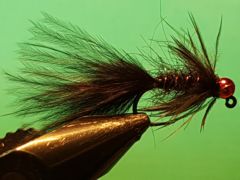
{{+1}}Red TBH CDC black fuzzel jig bugger{{-1}}
{{start}}
This fly is one of a series of 4 woolly bugger flies that I tie specifically for river fishing and if I only had one woolly bugger in my river fishing fly box this would be the one.{{end}}
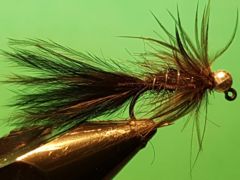
{{+1}}Silver TBH CDC black sparkle fuzzel bugger{{-1}}
{{start}}
This one of the 4 colours of TBH jig buggers that I carry in my river fly box. It's a great buggy looking fly that sink well and swims hook point up so less likely to get hooked up on the bottom othan flies that swim hook point down.{{end}}
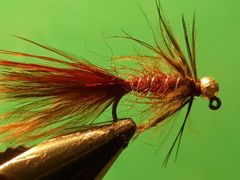
{{+1}}Gold TBH CDC brown fuzzel jig bugger{{-1}}
{{start}}
These are the only woolly bugger type flies that I now carry in my river fly box. They are a step up from my earlier version in that I have added a CDC under wing directly behind the front hackle which I have reduced down to just one full turn. I tie them in sizes #10 and #12 in just 4 colours.{{end}}

{{+1}}Humungus – black and gold{{-1}}
{{start}}
The tie of my fly is very close to David Downey's fusion of those two flies which he describes as perhaps the best still water fly in the world. I use it as a top dropper attractor and for that reason use a brass rather than a tungsten bead. Particularly in water that is a little discoloured I am confident this fly brings a lot of fish to my team.{{end}}
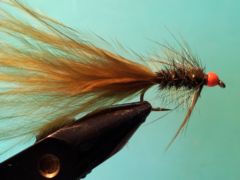
{{+1}}BH olive damsel bugger{{-1}}
{{start}}
At different times of the year you will start to see swallows dipping on the water feeding on midge. This is the time to start thinking about fishing either damsel buggers or olive woolly buggers because unfortunately for the midge it's not only swallows that have them on their menu it's also carnivorous damsel nymphs. Damsel nymphs come in a range of colours ranging from dull browns through to light and dark olives.{{end}}
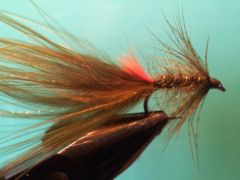
{{+1}}Mark II woolly bugger – alternate tie{{-1}}
{{start}}
The MK 2 woolly buggers evolved from standard black and olive woolly buggers as a fly that would imitate an American frog that had bright red between its hind legs and consequently the red tag is traditionally tied in below the tail. This tie is a little more popular than the original tie these days and is main point of difference is that the tag tied in on top.{{end}}
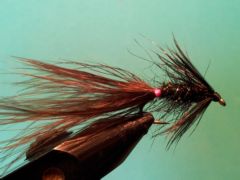
{{+1}}Hot spot yabby bugger – Chatto’s original{{-1}}
{{start}}
Large populations of dark olive Yabbies of the Cherax Genus have developed in both Lake Jindabyne and Lake Eucumbene and many other places. Many anglers suggest that the Yabby has been responsible for changing the feeding habits of trout in the lakes as the populations of Yabbies have increased. In fact in both Lake Jindabyne and Lake Eucumbene you seldom catch a trout with a full stomach when the contents doesn't include yabbies.{{end}}
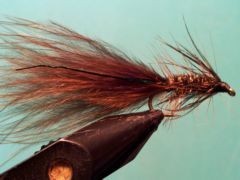
{{+1}}Brown damsel bugger{{-1}}
{{start}}
Unfortunately for the midge it's not only swallows that have them on their menu it's also carnivorous damsel nymphs and then of course further up the food chain trout.{{end}}
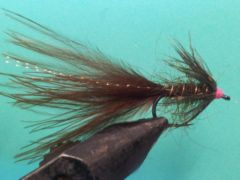
{{+1}}Brown pink hot head bugger{{-1}}
{{start}}
You can of course tie a hot head on any fly and from time to time when I am tying flies I add hot thread head to a couple of flies just to ensure that I have some options in my fly boxes. This fly takes the hot head concept to the next step and includes a bigger than average thread head which is a significant feature of the fly.{{end}}
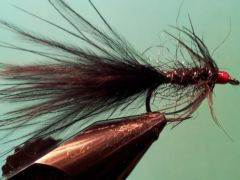
{{+1}}Black and red hot head bugger{{-1}}
{{start}}
I generally only tie it in two versions the fly described below and a brown and pink version. Particularly if the water is a little discoloured I find these flies work well either as middle dropper attractor flies or as my top dropper bob fly but from time to time also fish them on the point particularly if fish are switched onto small flies.{{end}}













